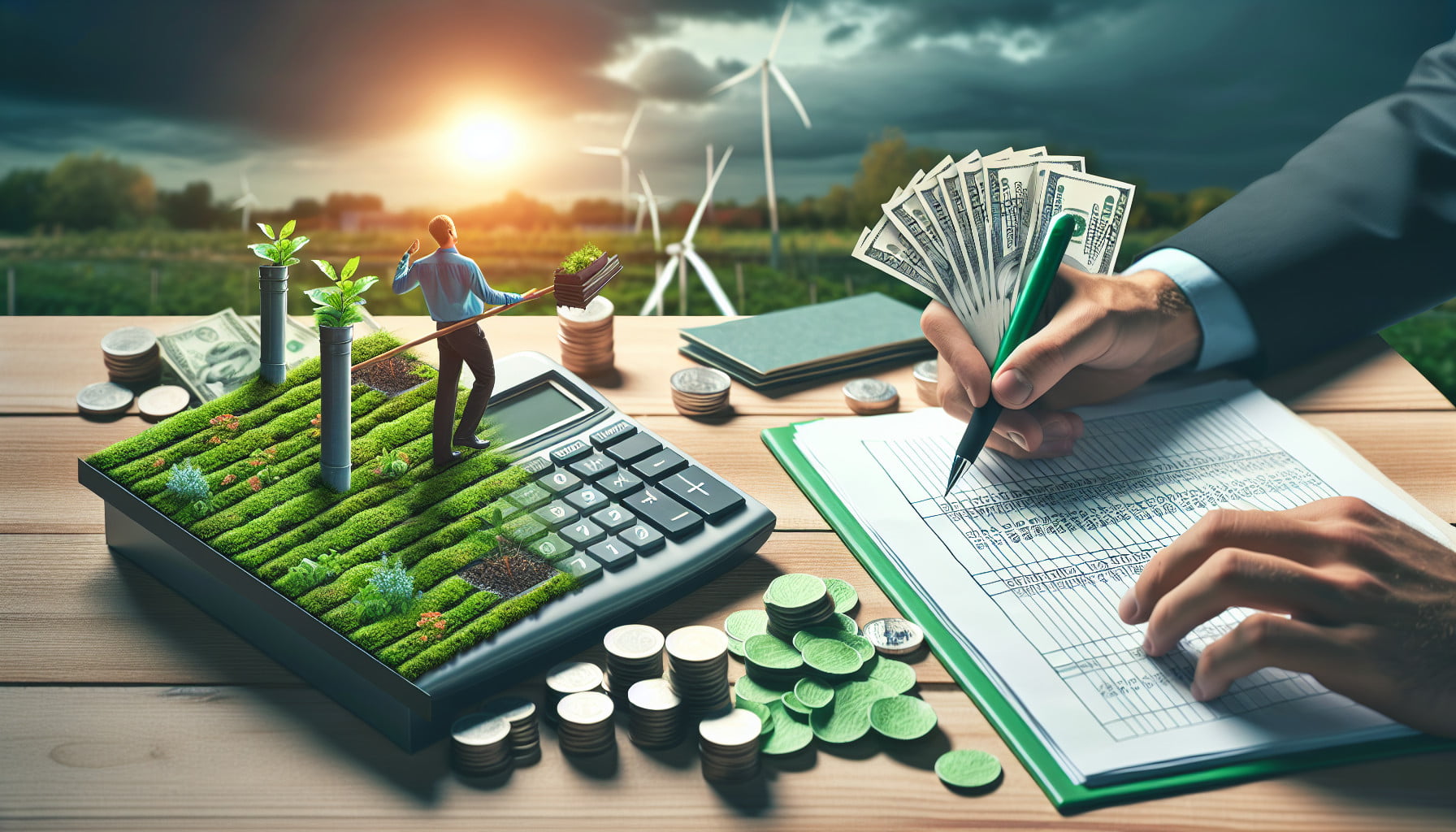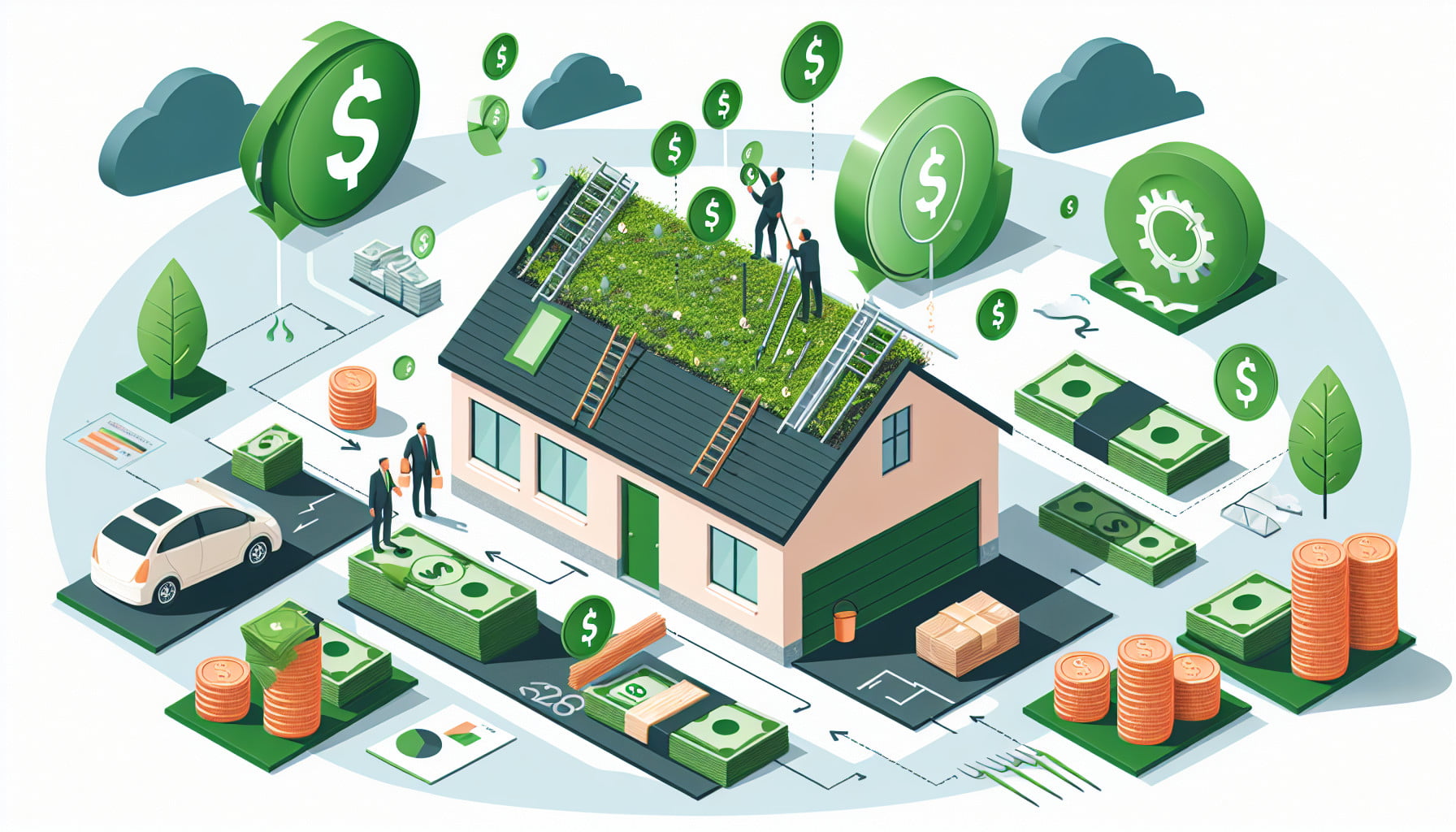Imagine transforming your plain rooftop into a vibrant, eco-friendly oasis that not only adds beauty to your space but also reduces your energy bills and benefits the environment. In this article, we will explore the cost of installing and maintaining a green roof system. Discover how this innovative solution can bring numerous advantages while also considering the investment required to bring it to life. From initial installation costs to long-term maintenance expenses, you’ll gain valuable insights into the financial aspects of embracing this sustainable trend.
Installation Costs
Cost of materials
When it comes to installing a green roof, there are certain materials you’ll need to invest in. This includes the waterproofing membrane, drainage layer, filter fabric, growing medium, and of course, the plants. The cost of these materials can vary depending on the type and quality you choose.
Cost of labor
Just like any other construction or roofing project, installing a green roof requires skilled labor. You will need professionals who have experience in green roof installation to ensure that the system is properly installed and will last for years to come. The cost of labor can depend on factors such as the size and complexity of the roof, as well as the local labor rates.
Cost of equipment and tools
To install a green roof, you’ll also need to invest in various equipment and tools. This can include items like wheelbarrows, shovels, rakes, and even specialized equipment for installing the growing medium and planting the vegetation. The cost of equipment and tools will depend on your needs and the quality of the products you choose.
Maintenance Costs
Routine maintenance
Once your green roof is installed, it will require regular maintenance to keep it healthy and thriving. This can include tasks such as watering, fertilizing, pruning, and weeding. Routine maintenance is crucial to ensure that the plants remain healthy and the roof continues to function as intended. The cost of routine maintenance will depend on the size of your green roof and the level of effort required.
Repair and replacement costs
Over time, certain components of your green roof system may need repair or replacement. This can include issues with the waterproofing membrane, drainage system, or plant damage due to extreme weather or pests. It’s important to budget for potential repair and replacement costs to ensure the longevity of your green roof system.
Professional maintenance services
While routine maintenance can often be done by the building owner or their team, some prefer to hire professional maintenance services to ensure proper care of their green roof. These professionals have the knowledge and expertise to diagnose and address any issues that may arise, saving you time and effort. The cost of professional maintenance services will depend on the scope and frequency of the services provided.

Green Roof Types
Extensive green roofs
Extensive green roofs are a popular choice due to their low maintenance requirements. They typically consist of a thin layer of growing medium and low-growing plants that are suitable for harsh environmental conditions. These roofs are lightweight and can be installed on a wide range of buildings, making them a cost-effective option.
Intensive green roofs
Intensive green roofs, on the other hand, are more complex and require more maintenance. They have a thicker growing medium and can support a wider variety of plants, including trees and shrubs. Intensive green roofs are often used in commercial or residential spaces where there is more available space and the desire for a lush and diverse rooftop landscape.
Semi-intensive green roofs
Semi-intensive green roofs fall between extensive and intensive green roofs in terms of maintenance requirements. They have a moderate amount of growing medium and can support a mix of low-growing plants and larger vegetation. Semi-intensive green roofs offer a balance between biodiversity and ease of maintenance.
Factors Affecting Installation Costs
Roof size and slope
The size of your roof has a direct impact on the installation costs of a green roof system. The larger the roof, the more material and labor will be required. Additionally, the slope of the roof can affect the complexity of the installation process, influencing costs as well.
Access and logistics
The accessibility of your roof also plays a role in the installation costs. Factors such as the height of the building and the availability of roof access can impact the ease with which materials and equipment can be transported to the site. Difficult access and logistic challenges may increase the overall installation costs.
Building structure and condition
The structure and condition of the building itself can affect the installation costs of a green roof system. If the building requires additional reinforcement to support the weight of the green roof, additional costs may be incurred. Similarly, if the roof is in poor condition and requires repairs before installation, it can add to the overall project costs.
Location and climate
The location and climate of your building can also impact the installation costs. In areas with harsh weather conditions or extreme temperatures, additional measures may need to be taken to ensure the longevity and success of the green roof system. These measures can increase the overall installation costs.

Factors Affecting Maintenance Costs
Roof design and complexity
The design and complexity of your green roof can influence the maintenance costs. Intensive green roofs with diverse vegetation may require more regular maintenance compared to extensive green roofs with simpler designs. The more intricate the design, the more time and effort will be needed to maintain it.
Plant selection and maintenance
The selection of plants for your green roof and their maintenance requirements can also impact the ongoing maintenance costs. Some plant varieties may require more frequent watering, fertilization, or pruning, while others may be more resilient and require less attention. Choosing the right plants for your green roof can help to keep maintenance costs manageable.
Access and labor costs
The accessibility of your green roof and the availability of labor can affect the maintenance costs. If the green roof is difficult to access, this may require additional time and effort to perform routine maintenance tasks. Additionally, labor costs can vary depending on local rates and the level of expertise required for specific maintenance tasks.
Economic Benefits of Green Roofs
Energy savings
One of the biggest economic benefits of green roofs is their ability to reduce energy consumption. Green roofs provide insulation, reducing the need for heating in winter and cooling in summer. This can lead to significant savings on energy bills over time.
Extended roof lifespan
By protecting the underlying roof membrane from the elements, green roofs can extend the lifespan of the roof itself. Traditional roofs are exposed to UV radiation, extreme temperatures, and fluctuating weather conditions, which can cause deterioration over time. Green roofs act as a barrier, reducing the wear and tear on the roof and ultimately saving you money on premature roof replacement.
Increased property value
Green roofs are increasingly seen as an attractive feature for potential property buyers. They not only enhance the aesthetic appeal of a building but also offer unique environmental benefits. As a result, buildings with green roofs can command higher property values, providing a potential return on investment.
Environmental Benefits of Green Roofs
Stormwater management
Green roofs play a crucial role in managing stormwater runoff. They absorb rainwater and slow down the rate at which it enters the drainage system. This helps to reduce the strain on urban infrastructure, such as sewers, and prevents flooding. By reducing stormwater runoff, green roofs help to enhance the overall resilience of cities.
Air quality improvement
Green roofs help to improve air quality by absorbing carbon dioxide and other pollutants. The plants on the roof filter the air, reducing the presence of harmful substances and improving the overall air quality in the surrounding area. This has direct benefits for public health and contributes to a more sustainable urban environment.
Biodiversity conservation
Green roofs also provide valuable habitats for birds, insects, and other wildlife in urban areas. They create green spaces in the midst of concrete jungles, promoting biodiversity and supporting the local ecosystem. By providing nesting opportunities and food sources, green roofs contribute to the conservation of urban wildlife.
Cost Analysis of Installation
Average cost range
The cost of installing a green roof can vary widely depending on various factors. On average, the installation costs can range from $10 to $25 per square foot. However, it’s important to note that this is just a general estimate, and costs can be higher or lower depending on the specific project requirements.
Breakdown of installation costs
The installation costs can be broken down into material costs, labor costs, and equipment costs. Material costs can range from $5 to $15 per square foot, depending on the type and quality of materials chosen. Labor costs can vary greatly depending on the complexity of the project and the local labor rates. Equipment costs will depend on the specific tools and equipment required for the installation.
Cost Analysis of Maintenance
Average cost range
The average cost of maintaining a green roof can range from $0.75 to $1.50 per square foot annually. This includes routine maintenance tasks such as watering, fertilizing, and weeding. However, it’s important to remember that this is just an average range, and the actual maintenance costs can vary depending on the size, design, and complexity of your green roof.
Factors affecting maintenance costs
Several factors can influence the maintenance costs of a green roof. These factors include the roof design and complexity, the selection of plants, and the accessibility of the roof for routine maintenance. Additionally, labor costs and the availability of professional maintenance services can also impact the overall maintenance expenses.
Financial Incentives and Grants
Government incentives
Many governments and municipalities are recognizing the benefits of green roofs and offer financial incentives to promote their installation. These incentives can come in the form of tax credits, grants, reduced permit fees, or expedited approval processes. It’s worth researching the specific incentives available in your region to help offset the installation and maintenance costs of your green roof.
Green roof grants
In addition to government incentives, there are also various grants available for green roof projects. These grants can be offered by non-profit organizations, environmental groups, or private foundations. They provide financial support to help cover the costs of green roof installation and maintenance, making the investment more affordable for building owners.
Tax credits
Some jurisdictions offer tax credits to encourage the installation of green roofs. These credits can help to offset a portion of the installation costs or provide annual savings on property taxes. Be sure to check with your local tax authority to see if you qualify for any tax credits or incentives for installing a green roof system.
In conclusion, while the installation and maintenance costs of a green roof system can vary depending on various factors, the economic and environmental benefits they provide make them a worthwhile investment. From energy savings and extended roof lifespan to stormwater management and improved air quality, green roofs offer both financial and ecological advantages.
By carefully considering the installation costs, maintenance needs, and available financial incentives, building owners can make informed decisions and embrace the many advantages of green roofs.

